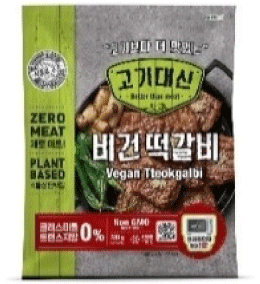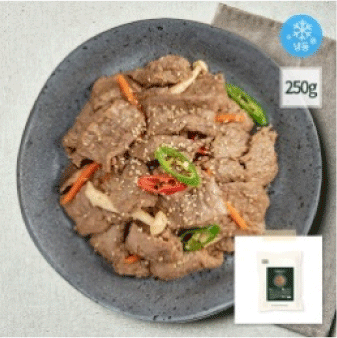Introduction
Global meat production has more than doubled since the 1960s. With the increasing global population, this trend is projected to continue despite the spread of negative perceptions of the livestock industry and its adverse environmental impacts (Vellinga et al., 2024). This has led to significant attention being placed on alternative foods that can replace traditional livestock products, with the aim of reducing the economics of meat production and addressing various environmental issues. Alternative foods are broadly categorized into cell-cultured and plant-based protein alternatives, as well as insect-, algae-, and mycoprotein-based alternatives. These alternative foods are seeing increasing demand as more food technology companies face the challenge of creating innovative and tasty alternatives that mimic the attributes of conventional meat, making them more appealing to consumers. The size of the global alternative food market increased from USD 4.7 billion in 2018 to approximately USD 9.4 billion in 2023 and its growth is predicted to continue (IPET, 2022; Statista, 2024b). Additionally, according to the global consulting firm AT Kearney, the ratio of traditional meat to alternative food consumption in the global meat market is expected to change from 9:1 in 2025 to 4:6 in 2040, indicating a sharp decline in the consumption of traditional meat products (Gerhardt et al., 2020).
Despite these positive outlooks for society, the traditional livestock industry holds a strong resistance to the growth of the meat analog market. Not only does it oppose the approval of cultured meat and other meat analogs for consumption, but it also challenges the notion that these products can be consumed similarly to traditional meat. Plant-based, insect-based, and microbial-based meat alternatives that use already approved food ingredients are currently on the market, whereas new food forms, such as cultured meat, are difficult to sell due to the lack of relevant regulations (Lee et al., 2023). While some countries have already permitted or are preparing to permit the consumption of cultured meat and other alternative foods, some European countries are predicted not to allow the consumption of cultured meat.
Consumers are increasingly recognizing the need to consume meat substitutes to address health, environmental, and animal welfare issues and are anticipating growth in the related market. However, there is still limited information available about alternative foods. Moreover, there is a lack of precise data on how effectively alternative foods can replace traditional livestock products and the impact that the growth of the alternative food market may have on the traditional meat market. Therefore, this document aims to review the trends in the alternative food market and predict the impact of its growth on the livestock industry.
Plant-Based Meat Analogs and Health
Many consumers believe that plant-based meat substitutes have significant health advantages over traditional meat. Traditional processed meat products are high in saturated fat or additives, or both, and high levels of their consumption have been associated with increased risk of cancer, obesity, and cardiovascular disease (Kumar et al., 2020; Nezlek and Forestell, 2022). Moreover, traditional meat has been identified as a cause of foodborne illness outbreaks worldwide every year (Nezlek and Forestell, 2022; Warmate and Onarinde, 2023). In contrast, plant-based meat alternatives may provide some cardiometabolic or other health benefits due to their high content of dietary fiber and unsaturated fatty acids and low content of cholesterol and are rich in essential amino acids, such as arginine and glycine (Kumar et al., 2020). However, current meat analogs made from plant-based ingredients are not thought to provide the expected health benefits compared to traditional meat. Information on the processing methods and stability of plant-based products and their impact on food safety remains limited. Banach et al. (2020) reported that potential allergens, antinutritional factors, pesticides, and processing contaminants could be present in plant-based products depending on the crop species and the processing methods applied to obtain the final product. Additionally, natural toxins, such as mycotoxins and plant toxins, can be found in plant-based meat analogs and dairy substitutes (Mihalache et al., 2022). Vellinga et al. (2024) conducted a multinational study on the nutritional content of ultra-processed plant-based foods, finding that foods like plant-based burgers provide protein, dietary fiber, and essential minerals but also contain relatively high levels of energy, sodium, and total fat, which may increase the risk of non-communicable diseases. Caradus et al. (2024) asserted that removing animal proteins from the food supply chain would exacerbate the challenge of providing adequate nutrition to the growing global population. The main reasons given were the higher digestibility of animal foods compared to plant-based proteins, the ability of ruminants to produce food on land unsuitable for farming, and their consumption of feed that humans cannot directly eat.
As mentioned above, many consumers believe that meat substitutes are healthier than traditional meat (Ngapo, 2022), and yet research indicates that plant-based beef products are less preferred than traditional beef. When priced the same, 65% of consumers preferred traditional beef over plant-based meat analogs or cultured meat, primarily due to taste (Lim et al., 2024). However, replicating the taste and texture of meat requires many more ingredients than its original counterpart. Meat analogs often contain over 20 different components, including fats and oils, sugars, colorants, vitamins, minerals, genetically modified pigments, organic acids, and phosphates (Ngapo, 2022). Moreover, the long-term effects of consuming plant-based meat analogs are not well known (Ngapo, 2022). Our research team’s investigation (unpublished data) found that most plant-based meat substitute products are primarily based on soy protein combined with numerous other ingredients, such as methylcellulose, dextrin, wheat gluten, starch, soy oil, glutamic acid, dietary fiber, yeast extract, salt, sugar, soy sauce, or spices. Recently, meat analogs using proteins from oilseeds (e.g., chia seeds) and grains (e.g., oats, rice) have been developed due to concerns about the allergenicity of legume proteins (Diaz et al., 2022; Lee et al., 2022; Senna et al., 2024). These plant-based proteins have lower protein efficiency compared to animal-based proteins in terms of nutrition, and plant-based diets are also low in micronutrients (e.g., iron, vitamin B12). Accordingly, a well-planned plant-based diet requires supplementation with nutrients such as protein, iron, calcium, vitamins, folate, and very long-chain omega-3 fatty acids (Łuszczki et al., 2023; Sutter and Bender, 2021). In addition, a flexitarian diet rich in plant-based foods is unlikely to have a significant impact on nutritional status, but this requires a tailored diet for each individual. Some populations, such as children, older adults, and pregnant women, may be at increased risk of nutritional deficiencies when eating a plant-based diet because they require adequate intake of micronutrients, such as calcium, zinc, phosphorus, folate, iron, vitamins, and fatty acids (Tyndall et al., 2024). Pregnant women need vitamin B12, iron, and folate intake during pregnancy to increase fetal growth rate and infant survival rate and prevent premature birth (ter Borg et al., 2023). Children have higher nutrient requirements per kilogram of body weight than adults, so they should be provided with sufficient amounts of various nutrients, and similar to pregnant women, deficiency of vitamin B12, iron, and folic acid can impede brain development and physical growth (Bailey et al., 2021; Molloy et al., 2008). Thus, plant-based diets should be well-planned; not only should they include nutrients from multiple sources to support growth and development, but they should also emphasize foods that provide sufficient protein and micronutrients. In addition, Tyndall et al. (2024) concluded that the market changes resulting from the shift to a plant-based diet should be considered comprehensively, taking into account the multiple impacts on research, industry, and society. This includes the complex relationships and tensions related to meat and milk substitutes, consumer preferences, value chains, and food systems, as well as ethical and political issues.
Current Research on Plant-Based Meat Analogs
Alternative foods that can replace traditional livestock products are gaining significant attention in the meat market. These alternative foods can be derived from plant proteins, insect proteins, mycoproteins, algae proteins, and cultured cell proteins. In addition to alternative proteins, the quality of meat analogs can be enhanced to closely resemble conventional meat through the use of alternative fibers and fats (Boukid, 2021; Liu et al., 2024). We conducted a Scopus search for papers from the past 3 years on plant-based protein substitutes (meat analogs), the most active and substantial segment within the alternative food market, using keywords referring to our focal topic (i.e., “plant-based meat,” “plant-derived protein,” or “plant protein meat”). From May 1, 2021, to April 30, 2024, a total of 776 papers were published on plant-based meat substitutes, including 607 research articles and 169 review articles. In addition, an increasing trend in the annual number of published papers was observed: 113 papers in 2021 (8 months), 202 papers in 2022, 308 papers in 2023, and 153 papers (4 months) in 2024. Here, we introduce groundbreaking technologies from selected studies aimed at enhancing the similarity of plant-based meat substitutes to traditional meat.
Among the various raw materials used to replace meat proteins with plant proteins, soy protein and pea protein are commonly used because they are highly nutritious and, as mentioned above, have relatively low allergenicity (De Marchi et al., 2021; Ma et al., 2022; Zhang et al., 2024). Grains, such as rice, also have low allergenic potential, so they are gradually recognized as potential meat substitutes and are being studied extensively. In a study by da Silva et al. (2021) examining the physicochemical composition and properties of plant protein concentrates derived from potatoes, rice, and peas, pea protein concentrates exhibited superior solubility, emulsifying properties, and rapid interfacial tension reduction, and the low solubility of potato protein concentrates could be improved through heat treatment, providing valuable information for substituting animal ingredients with plant-based ones in meat analog production. Penchalaraju and Bosco (2022) developed plant-based meatballs using mung bean, cowpea, and pigeon pea protein concentrates obtained using alkali/isoelectric precipitation methods. These concentrates showed high solubility under acidic and alkaline conditions (pH 2.0, 9.0), indicating their potential for use in various food groups, such as fruit juices, meats, and dairy products (Penchalaraju and Bosco, 2022). The plant-based meatballs, made by mixing equal amounts of the three concentrates, exhibited taste and color similar to traditional meatballs but with a lower oil absorption rate (Penchalaraju and Bosco, 2022). In related work, Putthawan and Chaiso (2023) developed plant-based meat analogs for older adults by combining soy, sacha inchi, wheat flour, quinoa, and perilla seeds with the antioxidant effects of Amaranthus dubius aqueous extract. Lee et al. (2022) prepared meat substitutes based on low-moisture extrusion cooking by mixing rice protein and soy protein in various ratios to create an alternative raw material with the potential to replace up to 75% soy protein with rice protein. Another study aimed to enhance the efficiency of isolated pea protein through treatments such as ultrasound, heat, and various enzymes (Tahir et al., 2024). These pre-treatment combinations improved the solubility, emulsification, and foaming properties of isolated pea protein and significantly enhanced the gelation, which is crucial for achieving meat-like qualities in plant-based meat analogs (Tahir et al., 2024).
In addition to the plant protein sources already mentioned above, lablab bean pods have also been highlighted as being rich in protein and other nutrients, with very low levels of antinutrient phytates, and green wheat protein is another high-quality plant protein with the potential to produce meat analogs (Pandey et al., 2023; Wen et al., 2023). Chia seeds, one of the sources of plant-based fat analogs, as mentioned earlier, have also recently been mentioned as a potential new protein alternative in the form of defatted chia powder (Senna et al., 2024).
Animal fat tissues containing collagen are elastic solids at room temperature but melt due to collagen protein denaturation during cooking (Choi et al., 2023). To enhance the quality of plant-based meat analogs, it is crucial to replicate the appropriate fat to achieve the moisture retention and juiciness of meat. Hu and McClements (2022) created emulsions from soy protein and soybean oil droplets, which were softer than actual fat and did not melt upon heating. Adding agar to these emulsion gels increased hardness and allowed some fat to melt during heating, but they still did not perfectly replicate the quality of beef fat tissue (Hu and McClements, 2022). Another study developed hybrid emulsion gels incorporating agar and alginate to mimic animal fat tissue (Choi et al., 2023). After mixing soybean oil, soy protein, agar, and alginate, the agar was cold-set, followed by ion-induced alginate gelation by immersion in a calcium chloride solution (Choi et al., 2023). The resulting gels improved the quality of plant-based meat analogs by capturing oil droplets and exhibiting elasticity across various temperatures, similar to pork fat (Choi et al., 2023). Subsequent research involved developing emulsion gels by treating soy oil, soy protein, and curdlan with transglutaminase to promote intermolecular bonding (Choi et al., 2024). The resulting emulsion gel retained elasticity after heating and effectively removed off-flavors from plant-derived fats (Choi et al., 2024). Curdlan is a heat-induced gelling agent similar in structure to collagen, the main component of animal fat, and has been identified as an alternative to animal fat (Choi et al., 2024). Other alternative ingredients based on similar principles include konjac glucomannan, methylcellulose, starch, and globular proteins. However, gel emulsions based on polysaccharides, such as konjac glucomannan and methylcellulose, are relatively brittle, motivating research to increase the gel strength (Choi et al., 2024). In the case of methylcellulose, the structure changes during heating, exposing hydrophobic regions, so it can maintain the firmness of the gel and is therefore often used in combination with konjac glucomannan, which is relatively heat-sensitive (Jeong et al., 2023). In another study, Pickering emulsions prepared with methylcellulose and isolated pea protein complexes significantly improved the emulsification stability, texture, and sensory properties of vegetable patties, effectively replacing conventional vegetable oils (Keum et al., 2024). The hydrophilic properties of methylcellulose before heating may have helped emulsify and stabilize the emulsion together with the isolated pea protein complexes (Jeong et al., 2023). Transglutaminase can be used to cross-link emulsion droplets between protein particles, and deacetylation of konjac glucomannan by alkali can induce strengthening of hydrogen bonds and hydrophobic interactions (Choi et al., 2024; Jeong et al., 2023) Although innovations that closely imitate the protein fat composition of conventional meat have been provided, more research is still needed to address the binding of protein and fat components involved in assembling meat analogs. This will ensure that meat analogs not only provide nutritionally relevant components but also satisfy the sensorial acceptability of consumers (Du et al., 2023).
Flavor is crucial in replicating meat, with about 80% of its appeal stemming from aroma (Kim et al., 2022). These flavors are generated by the Maillard reaction between amino-containing ingredients and reducing sugars when meat is heated and the production of various flavor compounds by volatile sulfur compounds and lipid oxidation (Bassam et al., 2022). Plant-based meat analogs have stronger nutty and fungal/earthy flavors than traditional meat. Kaczmarska et al. (2021) analyzed the flavor-related components of plant-based meat analogs and traditional meat. They found that glutathione, an important precursor of the Maillard reaction products in meat, was not found in plant-based meat analogs, and hypoxanthine, which enhances the flavor of meat, was also lower in plant-based meat analogs than in traditional meat. In addition, there are some differences in the flavor profile compared to traditional meat, indicating that it is difficult to generate meat flavor compounds in plant-based meat analogs. Results showing volatile compounds formed during polyunsaturated fatty acid degradation revealed that the total volatile compound profile of plant-based meat analogs was similar to that of traditional meat but was enriched in D-limonene and 2-pentylfuran, which are common in spices and legumes (Kaczmarska et al., 2021). Therefore, research focusing on reproducing meat flavor and aroma is essential to ensure that consumers can taste meat when they bite into meat analogs. A fundamental challenge is the characteristic off-flavor of soy protein, commonly used in plant-based meat substitutes. Technologies to eliminate or mask this off-flavor can significantly improve the quality of plant-based meat substitutes (Sakai et al., 2022a).
The cyclodextrin glucanotransferase reaction induced in plant-based patties generates cyclodextrins, which reduce the volatility of off-flavor compounds in the patties. This reaction also enhances the texture and sustains the water and oil binding properties (Sakai et al., 2022a). Further research on the enzymatic deamidation of plant proteins using protein-glutaminase led to improved water retention of plant-based patties, enhanced juiciness, and reduced unnecessary flavor compounds, thereby improving the physical, sensory, and nutritional properties of the patties (Sakai et al., 2023). In another study, a gelatin alginate hybrid hydrogel controlled the release of aroma molecules through thermal reactions (Kim et al., 2022). This hydrogel could be manufactured in various microcapsule formulations, encapsulating and preserving the aroma during refrigeration and releasing it upon heating to mimic meat aroma and control soybean off-flavor (Kim et al., 2022). Other efforts to create a meat-like taste and flavor in plant-based meat substitutes include encapsulating roast beef flavor in Pickering emulsions made from soy protein isolate and chitosan complexes (Zeng et al., 2024). Similar to the study by Kim et al. (2022), increasing the heating temperature or time accelerated the release of flavor compounds, but encapsulation reduced the loss of these compounds (Zeng et al., 2024). Consequently, adding encapsulated emulsions to plant-based meat substitutes improved flavor and texture (Zeng et al., 2024).
Fermented sausages incorporating soy protein and mycoprotein showed increased levels of volatile compounds similar to animal meat sausages and reduced amounts of off-flavor compounds, such as 1-octen-3-ol, through thermal extrusion and fermentation processing (Yuan et al., 2022). Onions fermented using Polyporus umbellatus exhibited a strong meaty flavor. Important aroma compounds in meat products, such as methyl palmitate, bis(2-methyl-furyl) disulfide, (E,E)-2,4-decadienal, γ-nonalactone, and eugenol, were found in large quantities in fermented samples. The presence of bis(2-methyl-furyl) disulfide, which imparts meaty and savory flavors, was purported to form during the fermentation process by P. umbellatus-mediated enzymatic reaction of intermediates derived from the thermal degradation of thiamine (Stöppelmann et al., 2023). Chekmarev et al. (2022) analyzed charred beef using gas chromatography olfactometry and, based on their findings, synthesized five flavor compounds for application in plant-based meat substitutes. These additives enhanced the fatty taste and aroma of plant-based patties, with notable effects from 3-(methylthio)-decanal, 3-(methylthio)-octanal, and 3,5-undecadien-2-one (Chekmarev et al., 2022). When it comes to mimicking the taste, texture, and red color of traditional meat, however, soy leghemoglobin, a protein with a three-dimensional structure containing a heme group similar to mammalian muscle myoglobin, has emerged as a promising option (Bolmanis et al., 2023).
Produced from soy, leghemoglobin is an effective ingredient for creating plant-based meat substitutes that closely resemble the quality of animal meat. Studies have been conducted to optimize growth conditions in shake flasks and cultivation media containing glycerol and methanol to enhance leghemoglobin production in strains such as Pichia pastoris, Saccharomyces cerevisiae, and Komagataella phaffii (Bolmanis et al., 2023; Pentjuss et al., 2023; Suleiko et al., 2024).
The color of meat is regulated by myoglobin, a heme-structured protein, which gives fresh meat a bright red appearance (Bolmanis et al., 2023; Ryu et al., 2023). Unlike animal proteins, plant proteins typically lack myoglobin and exhibit a yellow hue, which can deter consumer purchases (Ryu et al., 2023). Natural dyes used to improve the color of plant-based meat substitutes include beet, tomato, lycopene, carrot juice extracts, and soy leghemoglobin (Ryu et al., 2023). Recent studies have effectively mimicked the color of cooked meat by adding red beet and cocoa to plant-based meat substitutes (Ryu et al., 2023). Moreover, adding tomato and grape skin powder not only improved color (CIE a*) but also increased hardness and elasticity while inhibiting lipid oxidation and providing antioxidant effects (Zhao et al., 2024). Laccase (a multicopper oxidase) and sugar beet pectin helped plant-based patties undergo browning similar to beef patties when cooked, proving more effective than beet addition alone (Sakai et al., 2022b). Sakai et al. (2024) further revealed that the laccase catalytic reaction oxidizes betanidin (a red pigment) into brown high-molecular-weight polymers by decomposing it into betalamic acid and cyclo-DOPA. This principle was proposed as a browning mechanism for plant-based meat substitutes containing betanidin.
One of the key aspects in the production of plant-based meat substitutes is replicating the texture of meat, including chewiness, elasticity, and firmness. Plant proteins generally lack binding properties, causing the structure to collapse after cooking. Therefore, forming a fibrous anisotropic structure is crucial to effectively mimic the texture of meat (Ozturk and Hamaker, 2023). Commonly used ingredients for this purpose include methylcellulose, wheat gluten, konjac glucomannan, κ-carrageenan, transglutaminase, laccase, and zein (Ozturk and Hamaker, 2023). While wheat gluten is readily accessible and can create a fibrous network structure through disulfide bonding, its potential to cause allergies necessitates caution in its use (Bogueva and McClements, 2023; Ozturk and Hamaker, 2023).
Methods to improve the texture of plant-based meat substitutes can be divided into 1) the use of natural materials and additives and 2) the application of processing techniques, often used in combination. Mulberry leaf powder has been shown to form porous, lamellar, and filamentous structures, altering textural properties (Zhang et al., 2024). This powder also increased disulfide bonding and significantly boosted the β-turn secondary structure of protein alignment, resulting in a 98% increase in chewiness of the plant-based meat substitute (Zhang et al., 2024). Taghian Dinani et al. (2023) added pea protein and wheat gluten to ι-carrageenan, a type of hydrocolloid found in numerous species of red seaweeds. Calcium chloride was then added to form a hydrogel that maintained strong bonds, producing a product with excellent fibrous structure and improved quality. Other studies have incorporated canola oil into plant-based meat analogs to act as an inert filler between protein matrices or to enhance textural properties (Ozturk and Hamaker, 2023; Saavedra Isusi et al., 2023). The addition of sodium alginate to high-moisture extruded soy protein concentrate improved chewiness, enhanced protein protein or protein water interactions, increased water retention, and formed a dense fibrous structure (Dou et al., 2022). In an alkaline environment, adding tannic acid improved adhesive stability, resulting in products where soy protein isolate effectively bonded with simulated fats (Xue et al., 2024).
In a study by Chen et al. (2022), extruding a mixture of plant proteins with amylopectin promoted the unfolding of vicilin and legumin chains, creating a meat-like fibrous structure through protein rearrangement. High-moisture extrusion cooking, commonly used in the production of plant-based meat substitutes, generates relatively soft products with meat-like fibrous structures and textures (Ghanghas et al., 2024; Ozturk and Hamaker, 2023). The technique of injecting nitrogen gas during high-moisture extrusion in a cooling die generated more bubbles between protein matrices, reducing the density and hardness of plant-based meat substitutes and partially overcoming the limitations of traditional texture implementation methods (Ghanghas et al., 2024). However, high moisture extrusion methods can result in inconsistent quality depending on the nature of the plant protein concentrate or isolate. In order to form a fibrous structure like meat, it is possible only when the protein content of the protein concentrate or isolate is about 50% or more, and the ash and fiber contents and moisture retention ability are among other influential determinants of the texture. In addition, during the high-moisture extrusion process, the texture may vary significantly due to variables such as moisture content, extrusion temperature, and screw speed, and as a result, it may not be suitable for mass production (Ferawati et al., 2021). Regardless, the high-moisture extrusion method is one of the most studied technologies for producing plant-based meat substitutes due to its low labor and extruder energy consumption and high throughput due to the continuous processing system compared to other processing technologies developed to date. In the future, processing technology development is needed to further improve the texture and optimize the technology of plant-based meat substitutes, and new technologies such as shear structuring, electrospinning, freeze structuring, and three-dimensional printing with relatively fewer processing variables have been proposed (De Angelis et al., 2024; Ozturk and Hamaker, 2023).
According to a study by De Marchi et al. (2021), commercial plant-based burgers and conventional meat burgers contain similar amounts of protein and saturated fats, but plant-based burgers are richer in minerals and polyunsaturated fatty acids. Among the 18 analyzed amino acids, alanine, glycine, and methionine were significantly lower in plant-based burgers, and hydroxyproline, a major component of collagen protein, was only detected in conventional meat burgers (De Marchi et al., 2021). Nonetheless, plant-based beef burger products exhibit variations in fat, protein, and mineral content depending on the added ingredients, allowing for the adjustment of raw materials to suit consumer dietary preferences.
Plant-derived proteins, particularly soy, are known to be less digestible than animal proteins. When evaluated based on the digestible indispensable amino acid score (DIAAS) of protein, which is an indicator of protein quality, the main raw materials for plant-based meat analogs, such as corn, rice, wheat, oat, pea, and soybean, showed 36, 47, 48, 57, 70, and 91, respectively (Herreman et al., 2020). Conversely, the DIAAS (%) of beef, pork, and chicken, which are the main raw materials for animal-based processed meat, was 109.3%, 113.9%, and 108.2%, respectively, showing that they are easily digested and have a superior amino acid composition ratio compared to plant-based proteins (Ertl et al., 2016). In vitro digestion studies also showed that animal-based pork and beef have higher protein digestibility, releasing more peptides than plant-based meat analogs (Xie et al., 2022a; Xie et al., 2022b). When plant-based meat substitutes were fed to mice, their gastrointestinal digestive function was impaired, and the intestinal digestibility and absorption of plant-based meat analogs were lower than those of conventional meat (Xie et al., 2022a).
High-pressure processing or high hydrostatic pressure processing technologies can improve the low digestibility of soy-derived plant proteins (Mulla et al., 2022). High-pressure treatment induces protein denaturation, aggregation, or gelation, which can modify the characteristics of food proteins and increase digestibility (Mulla et al., 2022). Conversely, some research suggests that plant-based meat substitutes can enhance gastrointestinal motility and appetite in mice. Rats fed plant-based meat analogs for an extended period (68 d) showed increased thickness in the duodenum and jejunum and upregulation of neurotransmitters (5-hydroxytryptamine) and related signals associated with gastrointestinal motility (Xie et al., 2023). Additionally, volatile compounds like linalool, associated with appetite regulation, indicated that the intake of plant-based meat analogs decreased the level of appetite-suppressing factors compared to conventional meat (Xie et al., 2023).
Market Trends of Plant-based Meat Analog Foods in Korea
The domestic plant-based meat analogs market revenue is showing a continuous growth trend and is expected to grow to approximately USD 156.9 million by 2029 (Statista, 2024a). According to Statista’s 2024 report, the revenue of the domestic plant-based meat analog market in 2024 will be approximately USD 96.58 million, which is small enough to account for about 1.03% of the global market revenue (Statista, 2024b). Given that the domestic eating habits culture has historically been centered on vegetarianism rather than meat-based eating habits, it can be expected that awareness of the need for plant-based meat alternatives is low (Lee et al., 2021a). In addition, because the production of soybeans and wheat, the main raw materials for plant-based meat substitutes produced domestically, is low, there is a large dependence on overseas imports (Kim et al., 2024; Park et al., 2020). There is still a lack of technology that can fully implement texture, taste, and flavor by simply blending plant-based materials developed overseas (Kim et al., 2024; Park et al., 2020). Problems with establishing terminology and laws for the entry of new materials and foods also have a negative impact on developing processing technologies and encouraging corporate participation, becoming one of the causes of slow growth (Park et al., 2020). However, as positive awareness of environmental protection and healthy vegetarianism spreads, Korean companies and institutions are focusing on research and technology development for plant-based protein products (Lee et al., 2021a; Park et al., 2020).
Released in 2021, the “2050 Draft Carbon Neutral Scenario” stated that purchasing/consuming meat analogs can be motivated by health and environmental benefits, including dietary improvements, as a major means of reducing greenhouse gases in the agricultural and livestock sector (CNGG, 2021). Likewise, results of a big data survey by the aT showed that health (70.2%), environmental protection (35.5%), and animal protection (28.1%) were reasons for interest and purchase of plant-based meat analogs (aT, 2020a). Buyers of plant-based meat analogs and consumers willing to purchase them were also found to take into account convenience (37%), taste similar to animal-based products (36%), high protein content (31%), and health benefits (28%) when purchasing products (IPET, 2022).
Due to the potential growth potential of plant-based meat analogs, many companies in Korea are entering the meat analog market, and Table 1 summarizes the technologies and products of Korean plant-based meat analog manufacturers. The specified products are currently on sale, and the products with the highest sales volume are listed first. According to an appeal point analysis of plant-based meat analog processed products released on the Korean market in the years from 2017 to 2022, it was found to indicate trends for convenient use (microwave-cookable, simple use) and health-related claims (high protein, no cholesterol content/reduction; IPET, 2022).
| Companies | Contents | Commercial products | References |
|---|---|---|---|
| ALTist | - Launched leading plant-based alternative food brands Better than MeatTM and Green ButcherTM. -Low-moisture, high-temperature (LMHT). This process aligns protein tissues in a specific direction and then soaks and tears them to create the texture and mouthfeel of meat. -Launched products such as Better than MeatTM Vegan Soy Meat, Better than MeatTM Roasted Spicy Meat Rice Balls, and Better than MeatTM Plant-Based Tteokgalbi using ingredients such as plant-based protein, fiber, starch, and plant oils derived from soybeans and wheat. |
 <Better than MeatTM Vegan Soymeat> |
ALTist (2022) |
 <Better than MeatTM Roasted Spicy Meat Rice Balls> |
|||
 <Better than MeatTM Plant-Based Tteokgalbi> |
|||
| CheilJedang | - In 2021, CJ CheilJedang launched the plant-based brand PlantableTM. -Relies on textured vegetable protein (TVP) to achieve meaty flavor and elastic texture. -Soybean off-flavors are reduced with TasteNrich®, a natural flavoring ingredient developed after 60 years of research and development. -Launched products such as PlantableTM Bibimbap Rice Balls, PlantableTM Bulgogi Rice Balls, and PlantableTM Dumplings. |
 <PlantableTM Bibimbap Rice Balls> |
CJ CheilJedang (2022) |
 <PlantableTM Bulgogi Rice Balls> |
|||
 <PlantableTM Dumplings> |
|||
| Dongwon F&B | - Launched MyPlantTM brand with the message, “Plant-based recipes of your choice.” -Pursue a “Total Protein Provider” strategy, expanding product offerings to include all types of proteins. -Launched products, such as MyPlantTM Plant-Based Tuna Taste, MyPlantTM Kimchi Dumplings, and MyPlantTM Original, a plant-based canned ham, which were all applied to Dongwon F&B’s staple tuna and dumpling products. |
 <MyPlantTM Plant-Based Tuna Taste> |
Dongwon (2023) |
 <MyPlantTM Kimchi Dumplings> |
|||
 <MyPlantTM Original> |
|||
| FnFresh | - FnFresh, a subsidiary of Foodnamoo, launched Tomorrow’s Meal, a platform specializing in vegan food. -Developed vegan and vegetarian bento boxes under the private brand Vegan PlanTM with the Tomorrow’s Meal platform. -Launched products such as the Vegan PlanTM Vegan Lunch Box and Vegan PlanTM Veggie Lunch Box. |
 <Vegan PlanTM Vegan Lunch Box> |
FnFresh (2022) |
 <Vegan PlanTM Veggie Lunch Box> |
|||
| Hyundai Green Food | - Launched Veggie Life, a vegan snack under its own brand GreatingTM. -Develop vegetarian products with 100% pure plant-based ingredients. -Launched vegan convenience foods, including Veggie Life Veggie Hamburger Steak and Grilled Vegetables and Veggie Life Veggie Meatballs And Conchiglie. |
 <Veggie Life Veggie Hamburger Steak and Grilled Vegetables> |
Hyundai Green Food (2022) |
 <Veggie Life Veggie Meatballs and Conchiglie> |
|||
| Nongshim | - Launched Veggie GardeTM, a vegan food brand based on plant-based alternatives. -Developed high moisture meat analog (HMMA) manufacturing technology that can produce meat-like flavor and texture on its own. -Launched products such as Veggie GardenTM Vegan Dakgangjeong, Veggie GardenTM Dumpling Soup, and Veggie GardenTM Fried Chicken, all made with plant-based proteins, such as peas, chickpeas, and coconut oil. |
 <Veggie GardenTM Vegan Dakgangjeong> |
Nongshim (2022) |
 <Veggie GardenTM Dumpling Soup> |
|||
 <Veggie GardenTM Fried Chicken> |
|||
| Pulmuone | - GigusikdanTM, Pulmuone’s premier lifestyle brand in South Korea, utilizes the principle of minimal additives and Pulmuone’s knowledge and patented technology to create products with flavors and textures based solely on plant-based ingredients. -Pulmuone’s proprietary technology for making thin tofu with a unique texture involves cooling soy milk extracted from soybeans, adding coagulant, freezing, thawing, and molding. -Launched plant-based products such as GigusikdanTM Tender with Distinct Texture (Original), GigusikdanTM-Like Meatballs, and GigusikdanTM Luncheon Meat Slices. |
 <GigusikdanTM Tender with a Distinct Texture (Original)> |
Pulmuone (2023) |
 <GigusikdanTM-Like Plant-Based Meatballs> |
|||
 <GigusikdanTM Plant-Based Luncheon Meat Slices> |
|||
| Sahmyook Foods | - Launched Samyuk Mall in November 2020, offering SamyukTM food products made with plant-based ingredients. -Developed a line of black bean plant-based alternatives to gluten derived from soy and wheat with the addition of black bean powder. -Launched a variety of products, such as vege burger, black bean plant-based soy protein sausage flavor, and black beans plant-based soy protein ham flavor, using gluten derived from soybeans and wheat. |
 <SamyukTM Vege Burger> |
Sahmyook Foods (2021) |
 <SamyukTM Black Bean Plant-Based Soy Protein Sausage Flavor> |
|||
 <SamyukTM Black Beans Plant-Based Soy Protein Ham Flavor> |
|||
| Shinsegae Food | - Launched pork alternative brand BETTERMEATTM. -Dietary fiber and polysaccharides from algae are used to give the ham its unique elasticity and texture, while soy protein and vegetable oils add richness and flavor. -Launched the products BETTERMEATTM Cold-Cut, BETTERMEATTM Sausage Patty, and BETTERMEATTM Premium Luncheon. |
 <BETTERMEATTM Cold-Cut> |
Shinsegae Food (2022) |
 <BETTERMEATTM Sausage Patty> |
|||
 <BETTERMEATTM Premium Luncheon> |
|||
| Soymaru | - Founded in 2010 and exclusively manufactures soy protein domestically. -Researching and developing organized soy protein and conducting industrial cooperative research and development projects with Seoul National University. -Patent application on the texture of organized soy proteins via Subid (Application number: 1020230057942; KR Patent No. 102646821, 2024) -Launched products such as vegan gochujang bulgogi, vegan hamburger steak, and vegan cutlets. |
 <vegan gochujang bulgogi> |
Soymaru (2023) |
 <vegan hamburger steak> |
|||
 <vegan cutlets> |
|||
| Vegefood | - “Vegefood” comes from the Latin for “whole, wholesome, sound, healthy-vegetus” and “food.” -Started in 2001 as the only vegetarian company in the Korean food industry with the launch of soy ham made from soy protein. -Launched products such as marinated soy barbecue, vege mix balls, and soy ham. |
 <soy barbecue> |
Vegefood (2018) |
 <vege mix balls> |
|||
 <soy ham> |
|||
| Zikooin Company | - Founded UNLIMEATTM, which means meat that has no restrictions on appearance, cooking, or gastronomy. -Utilizes grain processing byproducts, defatted soybean flour, and rice bran to develop lean, protein-rich, plant-based sliced meat products. -Patent application (Application No. 10-2022-0112141) for an animal fat replacement composition containing no animal ingredients and a method of manufacturing a plant-based patty utilizing the composition (KR Patent No. 102588773, 2023). -Launched products such as UNLIMEATTM Plant-Based Bulgogi Rice Bites Gochujang, UNLIMEATTM Plant-Based Bulgogi & Spicy Pepper Kimbap, and UNLIMEATTM Pulled BBQ (Original/Stir-Fried Gochujang Flavor). |
 <UNLIMEATTM Plant-Based Bulgogi Rice Bites Gochujang> |
UNLIMEAT (2022) |
 <UNLIMEATTM Plant-Based Bulgogi & Spicy Pepper Kimbap> |
|||
 <UNLIMEATTM Pulled BBQ (Original/Stir-Fried Gochujang)> |
Plant-based meat analog products can be largely divided into traditional cooking products, ready-to-eat meal/meal kit products, and vegetarian/health-enhanced products (IPET, 2022). More than 95% of plant-based meat analog brands distributed/consumed in Korea are products of domestic companies, mainly products that reflect the food culture and tastes of domestic consumers (IPET, 2022). Specifically, products that reinterpret Korean dishes, such as tteokgalbi and bulgogi, as plant-based meat analogs are leading the domestic plant-based meat analog market (Lee et al., 2021a). Examples of commercial products containing vegetable protein extracted from soybeans and wheat, dietary fiber, starch, and vegetable oils are the Better than MeatTM Roasted Spicy Meat Rice Ball, Better than MeatTM Plant-Based Tteokgalbi, PlantableTM Bibimbap Rice Ball, PlantableTM Bulgogi Rice Ball, GigusikdanTM Plant-Based Meatballs, SoymaruTM Vegan Gochujang Bulgogi, and VegefoodTM Soy Bulgogi with BBQ Sauce (Table 1).
In addition, as convenience foods have gained popularity due to the increase in the proportion of single-person households in Korea, the launch of plant-based meat analog products in the form of ready-to-eat meals and meal kits is active (Kim, 2022). These products tend to be released in a form that can be easily cooked in a microwave after freezing and refrigerating or in a form in which other side dishes are packaged together. Representative examples are the PlantableTM Dumpling, MyPlantTM Kimchi Dumpling, Vegan PlanTM Vegan Lunch Box, Vegan PlanTM Veggie Lunch Box, GreatingTM Veggie Life Veggie Hamburger Steak and Grilled Vegetable, GreatingTM Veggie Life Veggie Meatball and Conchiglie, Veggie GardenTM Dumpling Soup, Veggie GardenTM Fried Chicken, UNLIMEATTM Plant-Based Bulgogi & Spicy Pepper Kimbap, and UNLIMEATTM Pulled BBQ (Original/Stir-Fried Gochujang; Table 1).
Finally, plant-based meat analog products released in Korea as vegetarian and health-beneficial products are attracting the attention of consumers who focus on diet and exercise by emphasizing health benefits, not just convenience, such as ready-to-eat meals (Jeon, 2023). These products target domestic consumers who choose to eat vegetarian food for various reasons and can increase access to consumption of domestic plant-based alternatives that have not yet become commonplace. Representative commercial products examples are the Better than MeatTM Vegan Soymeat without cholesterol and trans-fat, MyPlantTM Plant-Based Tuna Taste, MyPlantTM Original, GigusikdanTM Plant-Based Luncheon Meat Slices, SamyukTM Green Products Black Bean Plant-Based Soy Protein Sausage Flavor, SamyukTM Green Products Black Bean Plant-Based Soy Protein Ham Flavor, BETTERMEATTM Cold-Cut, BETTERMEATTM Sausage Patty, BETTERMEATTM Premium Luncheon, SoymaruTM Vegan Hamburger Steak, SoymaruTM Vegan Cutlet, Veggie GardenTM Vegan Dakgangjeong, VegefoodTM Vege Mix Ball, and VegefoodTM Soy Ham. For easy understanding, plant-based meat analogs have been classified into the above three types (traditional cooking products, ready-to-eat meal/meal kit products, vegetarian/health-enhanced products), but all plant-based meat analog products may belong to more than one type.
Overview of the Overseas Plant-based Meat Analogs Market
Recently, as plant-based analogs of food have grown into a global issue, plant-based meat analogs, which were historically chosen only by a small number of vegetarians, are expanding into a universal consumer choice (Lee et al., 2021b). The global plant-based protein product market accounts for 2% of the total food market, and although the market size is very small compared to the meat market, it is growing rapidly at an average annual growth rate of approximately 6% (Joseph et al., 2020). The global market revenue of plant-based meat analogs was valued at USD 9.42 billion in 2023, and it is projected to continue to grow at a compound annual growth rate (CAGR) of 8.55% from 2024 to 2029, to reach USD 10.33 billion in 2024 and USD 15.57 billion in 2029 (Statista, 2024b). In this study, we investigated the status of overseas plant-based meat analogs markets and product development status in the top three countries [China, the United States (US), the United Kingdom (UK)] and others according to the global plant-based meat analogs market ranking as of 2023 (Statista, 2024b).
In 2019, the size of China’s meat product market was 1 billion yuan, showing an increasing trend every year, accounting for 27.4% of global meat consumption as of 2021 (Chyxx, 2020; FAO, 2023). However, coronavirus disease 2019 (COVID-19) and African swine fever had a negative impact on meat supplies (OECD and FAO, 2021). To solve this meat supply problem, China’s Ministry of Agriculture and Rural Affairs mentioned alternative proteins in the “14th Five-Year Agricultural Plan” for 2022, and President Xi Jinping emphasized the importance of alternative proteins as the core of food security (Good Food Institute Asia Pacific, 2022). Although China’s plant-based meat analog market is still in its infancy, it is a market with great growth potential. As of 2023, China’s market revenue for plant-based meat analogs amounted to USD 2.13 billion and is expected to grow to USD 3.95 billion in 2029 (Statista, 2024b). Recently, meat processing or raw material suppliers, such as Shuangta and Jinzi, are expanding into the plant-based meat analogs market, and local startups, such as OmniPork, HaoFood, Starfield, and Zhenmeat, are emerging (Table 2; aT, 2021; Ortega et al., 2022; Wilder, 2023). Among these companies, OmniPork sells several products, such as minced pork and pork strips based on soy protein concentrate, and HaoFood markets dumplings and chicken products using corn, pea, and wheat proteins (Table 2).
| Companies | Research contents | References |
|---|---|---|
| HaoFood | - HaoFood mainly uses soy, peanut, wheat, and sunflower proteins in its products. The company has launched dumplings and pulled chicken-less products, which come in a variety of flavors and varieties. | HaoFood (2023) |
| Jinzi | - Jinzi, a Chinese producer of pork products, launched a 100% plant-based burger patty in 2019. - Developed pork-flavored artificial patties and meatballs. |
Lever (2020); Park (2021b); Xinhua (2019) |
| OmniFoods | - OmniPork was the first to introduce plant-based pork products made from edamame, non-GMO soybeans, shiitake mushrooms, and rice. Products such as OmniPork mince, strips, and luncheons are sold. | Figueiras (2022); OmniFoods (2022) |
| Richmond Sausages | - Meat-free products include meatballs, ground beef, bacon, sausage, and more, and are made with a mix of pea and wheat proteins. | Richmond Sausages (2022) |
| Shuangta Food | - Produces pea protein, faba bean protein, and 80% pea protein isolate, and has launched a plant-based protein meat product using pea protein (Shuangta Food, 2022). It also developed a Bacillus acidilactici pea protein isolation method. | Shuangta Food (2023) |
| Starfield | - This local startup specializes in plant-based alternatives, developing plant-based meatballs, burgers, and more using soy and wheat proteins, and in April 2021, launched plant-based dumplings in collaboration with Korean food giant CJ CheilJedang. | Greenium (2023) |
| Zhenmeat | - During the Mid-Autumn Festival in 2019, Zhenmeat successfully launched the world’s first plant-based mooncake and will develop and launch plant-based meatballs, jerky, and more in collaboration with a research team from Beijing University of Technology and Management and Shuangta Food company based in Shandong Province. | Xiaoyu (2019) |
The plant-based analogs food market in the US has entered the mainstream market due to positive awareness of healthy vegetarianism and increased interest in animal welfare (aT, 2020b). The revenue of the plant-based meat analogs market in the US was USD 1.36 billion in 2023, an increase of 23.7% compared to 2022 (Statista, 2024b). Despite the unstable international situation, it has grown steadily, recording an average annual growth rate of 13% over the years from 2019 to 2022 (aT, 2024a). In addition, due to continuous research and development (R&D) investment and food technology innovation, the plant-based meat analogs market is expected to reach USD 1.57 billion by 2029 (aT, 2024a; Statista, 2024b). According to a 2022 study by market research firm Acosta, 40% of plant-based meat analog consumers surveyed had purchased such products within the past 6 months, with 60% of buyers citing health as their main motivation and purchasing several products per month (Acosta, 2022). The formation of this continuous consumer base is due to plant-based meat analog companies in the US producing various types of products based on technology. Recently, plant-based meat analog companies based in the US include MorningStar Farms, Beyond Meat, Impossible Foods, Amy’s Kitchen, Boca, Tofurky, Lightlife, Field Roast, Loma Linda, Before the Butcher, and Daring, among which MorningStar Farms and Beyond Meat were selected as the first and second most recognized companies in the US, respectively (Table 3; Statista, 2023a). MorningStar Farms sells 38 different plant-based meat analogs, such as burger patties, chicken nuggets, and hot dogs using wheat gluten, soy-based proteins, and vegetable oils (corn, canola, sunflower oil; MorningStar Farms, 2024b). Another company, Beyond Meat, registered trademarks for 108 vegetable protein foods, including products that mimic meat protein and marbling using pea and coconut oil.
| Companies | Research contents | References |
|---|---|---|
| Amy’s Kitchen | - More than 120 plant-based products and 130 gluten-free products that are mostly kosher-certified. | Amy’s Kitchen (2017a); Amy’s Kitchen (2017b); Amy’s Kitchen (2024) |
| Before the Butcher | - Since early 2016, the company has created plant-based alternatives to traditional meats in the form of burger patties and ground meats, including chicken, beef, and pork, with tacos, burgers, and pepperoni, winning FABI awards. | Before the Butcher (2022a); Before the Butcher (2022b) |
| Beyond Meat | - Developed the Beyond Meat BurgerTM Patty, which uses peas, green beans, brown rice, and other meat alternatives to make up the protein, coconut oil to mimic meat marbling, and beet juice for juiciness. - Filed a technology patent related to the development of meat-like alternative protein foods that have similar structure, texture, and other characteristics to animal meat products (U.S. Pub. No. US 2017/0105438 A1, 2016). - Registered 108 trademarks for plant-based alternative protein foods with the U.S. Patent and Trademark Office (USPTO), including Beyond BurgerTM, Beyond BeefTM, Beyond SausageTM, and more. |
Lee et al. (2023); Park et al. (2019) |
| Boca | - Sells plant-based products such as nuggets, burgers, and chicken, and is one of the brands of Kraft Heinz, which also introduced the first plant-based turkey burger on the market. | Kraft Heinz (2024); Von Alt (2018) |
| Daring | - Using soy as the protein base, this company created a cholesterol-free, gluten-free, plant-based chicken product that is high in fiber and protein and is certified kosher and halal. It also uses a high-pressure system to create a chicken-like texture. | Daring (2023); Fast Company (2020) |
| Impossible Foods | - Developed a plant-based hamburger patty that replicates the taste, look, and smell of meat using wheat protein, coconut oil, and meat substitutes, such as potato protein and heme. - Soy leghemoglobin gene and genetically engineered yeast are used to make heme. The yeast is grown through fermentation, and the soy leghemoglobin is isolated from the yeast and added to the product, along with other micronutrients, to create a meat-like flavor. - The U.S. Food and Drug Administration (FDA) has certified heme extracted from soybean rhizomes as safe for human consumption, and it is used as a food additive coloring to create a meat-like appearance. - Filed a technology patent for utilizing leghemoglobin, a plant-derived heme protein, in the development of alternative food products (U.S. Patent No. 9,700,067 B2, 2015). |
Park et al. (2019) |
| Lightlife | - Lightlife is the number one refrigerated alternative protein brand in the US retail market. The company uses GMO-free, gluten-free, soy-free, and pea-free proteins to make its meal replacements. It sells a variety of plant-based products, including bacon, sausage, tempeh, hot dogs, and more, and is certified kosher. | Lightlife (2019); Lightlife (2020); PR Newswire (2019) |
| Loma Linda | - Manufactures plant-based alternatives to traditional meat products like steaks and franks. It also launched the first plant-based chicken product that can be stored at room temperature. | Loma Linda (2024) |
| MorningStar Farms | - It is available in burger, chicken, and sausage flavors. The burger patties are reportedly lower in fat than traditional beef burgers. | MorningStar Farms (2024a) |
| Tofurky | - Products include plant-based chicken, deli slices, burgers, sausages, pepperoni, and more, which are made primarily from soy and wheat proteins. | Tofurky (2023) |
The UK has the largest analogs food market in Europe (Statista, 2024b). The number of vegetarians in the UK as of 2021 was estimated at approximately 10% of the total population, and according to a survey of European consumers on plant-based foods published by ProVeg International in 2021, plant-based milk, meat analogs, and vegan margarine, cheese, and consumption of ready-to-eat foods was highest in Europe (aT, 2023). As of 2023, the revenue of the UK’s plant-based meat analogs market was USD 700 million, with an average of USD 550 million over the years from 2018 to 2022 (Statista, 2024b). It showed a decline rate of 3.3% in 2022 compared to the previous year but recovered in 2023 and showed a growth rate of 0.9% and is expected to show a growth rate of 4.3% in 2024 (Statista, 2024b). The beginnings of meat substitution in Britain date from the Victorian era, when a sizeable vegetarian community emerged (Rödl, 2019). Vegetarians made meat dishes, such as cutlets and sirloin combined with vegetables, increasing the diversity of vegetarian diets and replacing animal ingredients (Rödl, 2019). According to the results of a survey conducted by the EU Smart Protein Project in 2023, the country with the highest proportion of consumers purchasing plant-based meat analogs in supermarkets was the UK, at 74%, the highest in Europe (EU Protein Project, 2023). Companies entering the UK’s plant-based meat analogs market include UK-based Lina McCartney Foods, Meatless Farm, Cauldron Foods, THIS, VBites, and Richmond Sausages, while Beyond Meat in the US and Vivera in the Netherlands are also actively commercializing their products (Table 4; Statista, 2023b; USDA, 2022). However, due to the recent rise in production costs of plant-based analogs and rising inflation costs, many plant-based meat analogs companies in the UK are in financial difficulties or are experiencing difficulties (aT, 2024b).
| Companies | Research contents | References |
|---|---|---|
| Cauldron Foods | - Rehydrated textured plant-based proteins using soy protein and wheat gluten, for example, to produce products such as sausages and bakes. | Cauldron Foods (2024) |
| Linda McCartney Foods | - 32 Products, including sausage, vegan cheese, and chicken, based on rehydrated textured soy protein and fortified flour. | Linda McCartney’s (2024) |
| Meatless Farm | - Sells a line of pea protein-based, plant-based, meat-filled pasta products. | Meatless Farm (2024) |
| Richmond Sausages | - Produces and markets both traditional meat products and rehydrated textured vegetable protein (TVP)-based meat products, including bacon, sausages, and more. | Richmond Sausages (2022) |
| THIS | - THIS product is rich in iron, vitamin B12 and fibre and has boosted sales through partnerships with supermarket, restaurant and pharmacy chains including Waitrose, Holland & Barrett, Ocado, Honest, Burger, Patty & Bun and more. | THIS (2023) |
| VBites | - The largest producer of vegan cheese and meat alternatives in Europe with a 100% factory-based British Retail Consortium AA (BRC AA) facility, developing a range of products utilizing plant-based alternatives as well as algae and mycoproteins. | VBites (2020) |
The revenue of Europe’s plant-based meat analogs market increased by 11.0% to EUR 3.78 billion (approximately USD 4.07 billion) in 2024 compared to the previous year, and Germany, the UK, Italy, Spain, France, and the Netherlands were found to have large substitute food markets in Europe (aT, 2024b; Statista, 2024b). The growth of this market demonstrates European consumer preference for a sustainable diet. Textured vegetable protein (TVP), also called soy protein, soy meat, or soy chunks, accounted for 44% of the total European meat analog market and was valued at approximately USD 760 million in 2019 (The Vegan Society, 2019). TVP can replace various types of meat, and its high market share is expected to increase the consumption of plant-based substitutes in Europe as consumers become more aware of health, the environment, and sustainable sources of protein intake (aT, 2024b). According to a survey conducted by the Good Food Institute (2022), in Italy, 50% of respondents said they consume plant-based meat at least once a month, followed by Spain (47%), Germany (41%), and France (27%). Representative meat analog manufacturing companies in Europe include Italy’s Flower Burger, Spain’s Heura Foods, Germany’s Terra Vegane, and France’s La Vie (Pun, 2021; Starostinetskaya, 2024a; Starostinetskaya, 2024b). Flower Burger sells alternative foods, such as hamburgers, pizza, and kebabs, made using plant-based protein (Flower Burger, 2021). Heura Foods mainly sells meat analog products, such as ham, sausages, chicken breasts, chicken nuggets, and hamburger patties (Heura Foods, 2022). Terra Vegane sells bacon, steak, and ground meat, and La Vie mainly sells bacon (Table 5).
| Companies | Research contents | References |
|---|---|---|
| Flower Burger (Italy) | - Plant-based meat substitutes made from bean sprouts, tofu, chickpeas, and quinoa, with plant-based ingredients like turmeric and edible charcoal for color. | Flower Burger (2021) |
| Heura Foods (Spain) | - Made with 100% plant-based alternatives, primarily heura, a legume rich in fiber, vitamins, and minerals. | ONE (2024) |
| Terra Vegane (Germany) | - Uses only 100% plant-based, certified organic/BIO ingredients to create a protein mix of grain, soy, and wheat proteins for high protein and the best flavor and texture to create a 100% plant-based oil replacement. | Terra Vegane (2022) |
| La Vie (France) | - On January 8, 2024, La Vie introduced pea- and soy-based plant-based bacon with five times less saturated fat than pork ham, with no nitrites but similar taste, smell, and texture. | Vegconomist (2024) |
| Efko Food (Russia) | - In 2020, the company launched Hi!, a brand of plant-based alternatives, including plant-based patties, ground meat, and meatballs, which are commercialized as semi-prepared products, primarily burgers or meatballs, based on soy protein, water, vegetable oil, natural spices, and dyes. | Kotra (2022) |
| Nye Myaso (Russia) | - Plant-based protein food products that taste, feel, and look like conventional meat products and are 100% natural, made with vegetables, oils, and spices. | Nye Myaso (2022) |
| Well Done (Russia) | - Produces 100% plant-based products with no animal ingredients, using 99% less water and emitting 10 times fewer greenhouse gases when manufacturing plant-based alternatives compared to animal-based ingredients. | Well Done (2020) |
| ITO Ham (Japan) | - In March 2020, ITO Ham, a leading company in the meat processing market in Japan, launched a plant-based alternative food brand named Almost Meat. | Meros Consulting (2021) |
| Marukome (Japan) | - With a history spanning 170 years, Marukome is the number-one selling miso brand in Japan and the largest exporter of miso production worldwide, including the US, Europe, China, Korea, and Southeast Asia. | Marukome (2024) |
| Nippon Ham (Japan) | - Nippon Ham, one of Japan’s largest protein suppliers, has developed products using soy as a protein-rich ingredient and, in September 2023, established the Japan Soy Meat Association with four other food producers working on soy-based meat alternatives. | Nippon Ham (2020) |
| Otsuka Foods (Japan) | - Launched a brand called Zero Meat, which applies reverse engineering (analyzing the structure of a product and, from there, examining how it is made, how it works, and its specifications, such as blueprints or source code) to achieve a meaty texture. | Zero Meat (2021) |
| Prima Meat Packers (Japan) | - Prima Meat Packers, a manufacturer of fresh meat and animal products, introduced Try Veggie, a soy-free brand, in March 2021. | Choi (2024a) |
In Russia, the revenue of the plant-based meat analogs market amounted to USD 680 million as of 2023, and representative companies include Efko Food, Well Done, Nye Myaso, and Green Fish Agama (Kotra, 2022; Statista, 2024b). They all sell a variety of products, including cutlets and hamburger patty analogs; for example, Green Fish Agama sells salmon, crab, cheese, and sausage products using plant-based proteins, sunflower oil, and natural spices (Table 5). In addition to the Russian companies mentioned above, global companies, such as Beyond Meat, are leading most of the Russian meat analog food market (Park, 2021a). In terms of sales, plant-based meat analog frozen products increased 2.5 times in the first half of 2023 compared to the previous year, and the plant-based analog market is expected to grow at an average annual rate of more than 9.94% from 2023 to 2028 (Actual Market Research, 2023; aT, 2023). According to a survey on meat analog food preferences in Russia, 80% of respondents were aware of alternative foods, and 51% of them responded positively to including analog foods in school lunch menus (aT, 2022).
In Asia, the plant-based meat analog market is largest in China, Japan, and Indonesia, and the Asian market is expected to grow by 10.17% annually (CAGR 2024 2029) to reach USD 3.74 billion in 2024 (Statista, 2024b). In Japan, plant-analog food is attracting attention as a sustainable food in terms of health, environment, and ethics. As the popularity of vegetarian and vegan diets increased in the early 20th century, various plant-analog food products were developed and sold in the market (Hitomi and Murakami, 2022). As of 2023, the revenue of Japan’s plant-based meat analog market amounted to USD 303.3 million and is expected to grow to USD 427.1 million in 2029 (Statista, 2024b). One of the characteristics of the Japanese plant-based analog market is that existing livestock processing companies are actively producing plant-based analog food products using their own seasoning and processing methods. In particular, the importance of entering the plant-based analog food market can be confirmed as all of the top three Japanese processed livestock food manufacturers (Nippon Ham, ITO Ham, Prima Meat Packers) are launching plant-based analog food products and are conducting R&D (ITO Ham, 2024; Kang and Kim, 2023; Nippon Ham, 2024; Prima Meat Packers, 2024). Food processing company Otsuka Foods and soybean paste processing company Marukome have also expanded into the plant-based meat analog industry, selling meat analogs made from soy-derived proteins (Table 5; Hitomi and Murakami, 2022).
Indonesia’s plant-based meat substitute market is expected to grow from USD 275.8 million in 2023 to USD 430.4 million in 2029, making it a country with a larger market size than Japan (Statista, 2024b). Most of the plant-based meat substitutes are consumed through products from foreign companies, and Indonesian companies include Green Rebel Foods and Meatless Kingdom (Arwanto et al., 2022; Green Rebel Foods, 2022; Meatless Kingdom, 2024). Green Rebel Foods produces beef steak and chicken using beans, mushrooms, and seitan and also sells cheese mixed with potatoes and coconut oil as a substitute for animal fat (Green Rebel Foods, 2022). Meatless Kingdom sells products in the form of traditional Indonesian beef dishes, such as tendeng, rendang, and gepuk, based on mushrooms (Meatless Kingdom, 2024).
Outside of these Asian countries, Singapore, although the market size of plant-based meat alternatives is very small, is well known as a country with a high level of acceptance of alternative meats. The plant-based meat alternative market in Singapore is expected to reach USD 13.75 million in 2023, making it a significantly smaller market compared to the aforementioned countries (Statista, 2024b). However, according to Food Frontier, the per capita alternative meat import value in 2022 was USD 2.34, which is high compared to other countries (Food Frontier, 2023). Singapore was the first country to approve commercial sales of meat substitutes in December 2020 and is encouraging research into alternative foods, such as plant-based meat substitutes, at the national level (MERiCs, 2023). This active acceptance of new foods is expected to be partly due to the fact that Singapore imports more than 90% of its food supply (Matwick, 2024). Singapore-based meat analog companies include Next Gen Foods and Karana. Next Gen Foods produces a chicken substitute called Tindle using wheat flour, soybeans, and sunflower oil and sells it in various forms, such as burgers, nuggets, and fillets (Next Gen Foods, 2020). Karana produces dumplings, burgers, and sausages using jackfruit as its main ingredient (Karana, 2022).
Analysis of the Impact on the Livestock Industry in Korea due to Industrialization of Plant-based Meat Analogs
As Korea’s per capita intake increases, the production value of the livestock industry is expected to reach 29.2 trillion won in 2033, and the total livestock industry production is reported to gradually increase from 2016 to 2022 (KREI, 2024a). In a report announced by Statistics Korea in 2024, the ratio of livestock farms among all farms was confirmed to be 4.5%, and the proportion by livestock products was confirmed to be Korean beef at 65.9%, pigs at 3.4%, and chicken at 26.2% (Statistics Korea, 2023a; Statistics Korea, 2023b). However, although the income of livestock farms has increased by an average of 2.0% per year over the past 10 years (2013 2022), the number of livestock farms is decreasing by an average of 7.4% per year (Statistics Korea, 2023b; Statistics Korea, 2023c). One of the reasons is the aging of Korea’s livestock industry (Lee, 2023; Yoon et al., 2024). Therefore, the number of farm households and the population of farmers is expected to continue to decrease until 2032, and research to solve this problem is underway in Korea (Choi, 2024b). Recently, various studies have been conducted to foster the younger generation as farmers and develop smart livestock farming technology to improve the livestock industry environment (Kee et al., 2024; Ma et al., 2017). In addition, Korea’s livestock product self-sufficiency rate is also expected to gradually decrease to 40.0% for beef, 73.2% for pork, and 77.0% for chicken in 2023 (KREI, 2024b). According to the KREI, the application of tariff quotas to stabilize prices in 2024 led to an increase in imports of beef, pork, and chicken, a decline in exchange rates, and a decrease in self-sufficiency in livestock products (KREI, 2024b).
On the contrary, Korea’s livestock industry production itself is expected to continue to increase in the future. According to Choi and Lee (2023), the number of livestock farms is decreasing due to aging and declining rural population, but domestic livestock production is expected to increase due to improved productivity and increased added value. This appears to be the result of a strategy to specialize and scale livestock farms to respond to increased production costs, and as the scale of livestock farming increases, income increases due to reduced production costs (Choi and Lee, 2023). As such, domestic Hanwoo beef production continues to increase due to increased slaughter volume and carcass weight. In 2022, the number of Hanwoo raised reached a record high of 3,552,000 head, and domestic beef production is expected to increase to 318,000 tons in 2033 and continue to increase (KREI, 2024b). From 2025 to 2028, the number of animals available for slaughter and beef production is expected to decrease due to consumer meat support projects and a decrease in calf production, but the wholesale price of Hanwoo is expected to increase gradually, reaching 21,000 won/kg in 2033 (KREI, 2024b; RDA, 2022). The amount of pig slaughter is also expected to increase due to the increase in breeding, reaching 1.19 million tons in 2033, and the wholesale price of pork is also expected to rise by 3.2% 7.1% from 5,134 won/kg in 2023 to 2033 (KREI, 2024b). This can be seen as the result of ongoing research to improve livestock products related to improving sow fertility and pork productivity despite the decrease in sow population (Kil et al., 2013; Kim and Ok, 2015; KREI, 2024b; Min et al., 2020; Park et al., 2021). Like cattle and pigs, the productivity of breeders and broilers is expected to increase by an average of 0.8% per year from 98.67 million in 2024 to 106.43 million in 2033 (KREI, 2024b). Accordingly, the per capita livelihood distribution price is expected to increase from 2,062 won/kg in 2023 to 2,113 won/kg in 2033 (KREI, 2024b). In addition, the production of livestock products is expected to increase further due to the development of smart livestock farming technology, and the application of Internet of Things (IoT) technology-based monitoring to domestic pig farms is expected to increase the production rate by up to 9.3% (Mahfuz et al., 2022). However, excessive growth in breeding populations can lead to oversupply and a sharp decline in wholesale prices (KREI, 2024b).
Despite these conflicting opinions, the self-sufficiency rate of domestic livestock products may decrease due to increased dependence on imports, which may ultimately lead to an increase in the consumer distribution price of livestock products and an increase in the carbon footprint due to transportation distance (Clapp, 2017; Kaufmann et al., 2022). In Korea, various studies are being conducted to improve the self-sufficiency rate of livestock products, and interest in self-sufficiency rate has increased rapidly since the COVID-19 pandemic in 2019. Meanwhile, discussions on analysis and improvement measures for the self-sufficiency rate of livestock products at home and abroad continue (Avkhadiev et al., 2021; Bingham et al., 2022; Guo and Tanaka, 2020; Kaufmann et al., 2022; Kopteva and Shabalina, 2020; Sarıca, 2023; Yoon et al., 2024).
According to a report published by the Ministry of Agriculture, Food and Rural Affairs (MAFRA) in 2023, the per capita consumption of Korea’s three major types of meat (pork, beef, chicken) is expected to increase by an average of 0.8% per year to reach 65.5 kg in 2033 (MAFRA, 2023). Meanwhile, the OECD-FAO Agricultural Outlook 2023 2032 report indicates that domestic per capita meat consumption in 2030 will be lower than the OECD average but will increase steadily by 2032 (OECD and FAO, 2023). Korea’s meat consumption is positively associated with its household preference for meat: pork is by far the most consumed meat (67.6%), followed by beef and chicken at 19.3% and 12.2%, respectively (KREI, 2024b).
Results from the Food Consumption Survey (Lee et al., 2023) showed that the frequency of eating pork was approximately once every 2 weeks or once a week, and the preference for domestically produced pork was overwhelmingly high at 92.5% (Lee et al., 2023). Pork is sold in seven parts: shoulder, sirloin, pork belly, ribs, tenderloin, front leg, and hind leg, among which consumers have a high preference for pork belly because of its high-fat content (Choe et al., 2015). According to the KREI Agricultural Observation Center consumer survey, the preference for pork belly (62.3%) far outweighed that for pork neck (21.3%) and pork ribs 9.5% (Kang et al., 2024; KREI, 2024b; Oh and See, 2012). In comparison to the high-fat parts, demand for low-fat cuts is low, which causes the price of high-fat cuts to rise due to oversupply (Kang et al., 2024; Kim and Choi, 2018). In 2023, the wholesale price of pigs was 5,134 won/kg due to an increase in production compared to the previous year, and the retail price of pork belly (2,534 won/kg) far exceeded that of low-fat foreleg at 1,355 won/kg (KREI, 2024b). To alleviate this oversupply of low-fat parts, the government is working to establish a new system for domestic institutions and associations and promote sales of low-fat products through the 2013 Agricultural Distribution Structure Improvement Plan announced in 2013 (Kim and Choi, 2018).
Beef was most often consumed once a month (34.3%) or once a week (32.5%; Lee et al., 2023). The types of beef distributed domestically can be divided into Hanwoo, imported beef, and introduced beef, and Korean consumers are known to prefer high-quality Korean beef with high intramuscular fat content (Chung et al., 2018; Gotoh and Joo, 2016; Lee et al., 2023). However, the origin of beef sold was 71.6% domestic and 19.5% Australian. The preference for domestic beef was relatively low compared to pork, and the high preference for imported beef was due to differences in perception of taste, safety, and low price (Chang, 2023; Kim, 2019; Lee et al., 2023). As of 2023, the average price of Hanwoo (castrated cattle) was 18,619 won/kg, whereas American beef was 11,101 won/kg and Australian beef was 8,834 won/kg, making imported beef relatively cheaper (Lee et al., 2023). Therefore, research on reducing feed costs and improving feed efficiency has recently been actively conducted to stabilize Korean beef prices (Chang, 2018; Lee et al., 2021b; Yoon et al., 2024).
Regarding the frequency of chicken consumption, most consumers ate it once every 2 weeks (26.6%) or once a month (25.1%; Lee et al., 2023). The origin of chicken sold was largely domestic, accounting for 96.0%, and the average price of broiler chicken in 2023 was 797 won/chicken, an increase of 14.2% compared to the previous year (KREI, 2024b; Lee et al., 2023). The purchasing rate of chicken by parts was whole chicken (28.7%), breast (22.5%), and leg (18.1%), confirming the preference for the whole carcass (KREI, 2024b).
Based on the data mentioned above, the per capita consumption, number of livestock, production, and current market prices of the three major livestock species (pigs, cattle, chickens) in Korea are expected to increase steadily. In addition, the total production amount for the entire livestock industry is expected to grow steadily without decline until 2035. According to previous research on the relationship between the plant-based meat analog market and the traditional meat market, it is generally believed that despite the increase in market share for plant-based substitutes, it will not have a significant impact on the meat market (Andreani et al., 2023; Lusk et al., 2022; Neuhofer and Lusk, 2022). Moreover, most households that purchased plant-based meat analogs also tended to purchase traditional meat, and the scale-up of plant-based meat analogs had a small impact on cattle production (Lusk et al., 2022; Neuhofer and Lusk, 2022).
As of 2021, the US beef industry produced 28 billion pounds of beef, and US beef exports were valued at 3.4 billion pounds (USDA, 2023). The US is not only the largest beef producer but also a beef exporter with the world’s largest livestock industry (Poddaturi, 2023). The US plant-based meat market saw an increase from USD 1.56 billion in 2022 to USD 1.95 billion in 2023 (SKYQUEST, 2024). In contrast, the US beef market, which was valued at USD 102.00 billion in 2023, is projected to grow to USD 108.14 billion by 2024 (Fortune Business Insights, 2024a). Although the plant-based meat market continues to grow, the scale of growth in the traditional meat market is significantly larger. In Canada, the world’s third-largest pork exporter and seventh-largest beef exporter, Canada’s largest grocery chain reported that growing demand for plant-based proteins was not affecting meat sales despite the rapid growth of meat analogs (Edmiston, 2020). Canada’s traditional meat market share is over 99%, with an average annual growth rate of 1.7%, while the market share of meat analogs is 0.9%, with an average annual growth rate of 8.3% (Agriculture and Agri-Food Canada, 2019). Therefore, the impact of the growth of alternative foods on the growth of traditional meat will be minimal. Approximately 43% of Canadian consumers reported that they are willing to replace some of their meat consumption with plant-based sources (Ngapo, 2022). However, a previous study found that while about 11% of consumers claimed that their consumption of pork had decreased over the past 12 months, another 17% of consumers had actually increased their consumption of traditional meat (Ngapo, 2022). Therefore, even in the US and Canadian markets, where meat analogs are actively sold, the existing traditional livestock market is not shrinking, and the traditional meat market is expected to grow steadily (Fortune Business Insights, 2024b; Fortune Business Insights, 2024c).
In the case of the Korea market, when the traditional meat and meat analog search engine share in 2023 was compared with that to 2016, the traditional meat search engine share increased 1.4 times for pork (from 9.4 to 12.8) and 2.7 times for beef (from 6.5 to 17.7), whereas chicken showed a 1.2-fold decrease (from 11.59 to 9.94; Data Lab, 2023a). The share of meat analogs increased 15.8 times (from 0.9 to 14.5) for vegetable proteins, 12.6 times (from 1.6 to 20.5) for cultured meat, and 4.1 times (from 30.4 to 7.5) for edible insect proteins (Data Lab, 2023b). Although the popularity of alternative protein foods generally increased significantly between 2016 and 2023, consumer interest in domestic traditional meat gradually increased. In addition, although it has been a long time since various meat analogs were released, meat consumption has not decreased, and meat analogs still hold a small market share compared to the traditional meat market (Choudhury et al., 2020; Godfray et al., 2018; OECD and FAO, 2023; Safdar et al., 2022). This trend is confirmed to be due to negative perceptions of meat analogs, preference for traditional meat, poor taste of meat analogs, and lack of familiarity with meat analogs (Carlsson et al., 2022; Cordelle et al., 2022; Godfray et al., 2018; Motoki et al., 2022; Safdar et al., 2022; Siegrist and Hartmann, 2023; Slade, 2018; Szenderák et al., 2022; Tuorila and Hartmann, 2020).
According to a report by Meticulous Research (2024), the global plant-based meat analog market size is expected to grow at an average annual rate of 8.4% from 2024 to 2031, reaching USD 26.45 billion in 2031. As seen in the previous data, the meat analog field is growing, and some consumers are reducing their meat consumption. However, the traditional meat market, which is overwhelmingly large, is also growing steadily. The number of consumers who are increasing their meat consumption is also increasing, so the meat analog market is growing. It is judged to have no significant effect as a substitute for traditional meat. In Korea, there are also reports that foods using alternative proteins are expected to quickly occupy the livestock market as they have a lower environmental load compared to traditional livestock production and have a positive effect on consumer awareness, such as promoting animal welfare (Choi et al., 2022). However, similar to the global trend, even as the number of consumers purchasing plant-based meat analogs increases, the number of consumers purchasing traditional meat is also expected to continue to increase. As such, the alternative food market is not having a significant impact on the domestic traditional livestock industry market and is expected to have a negligible impact in the future.
Limitations of Plant-based Meat Analogs
The emergence of meat analogs has led to various types of products that suit consumer preferences and have additional effects, such as animal welfare and environmental protection, which can serve as an opportunity for the production and development of livestock products suitable for a new era (Pang and Chen, 2024). However, unlike traditional meat, which was mentioned in positive terms in several previous studies, plant-based meat analogs received relatively negative responses (Michel et al., 2021; Sogari et al., 2023; Szenderák et al., 2022). According to Daszkiewicz et al. (2023), traditional meat like salami, frankfurters, and kabanos sausages have various fatty acid profiles, such as palmitic acid (C16:0), stearic acid (C18:0), oleic acid (C18:1), and linoleic acid (C18:2) compared to their plant-based meat analogs, contributing to their taste, texture, and overall sensory experience, which are critical factors for consumer acceptance.
Some of the barriers to improvement that plant-based meat analogs must overcome to compete with traditional meat are as follows: currently, the main raw materials used in manufacturing plant-based meat analogs are limited, such as chickpeas, isolated soy protein, and vital gluten. In addition, because the taste, texture, and flavor are somewhat lacking compared to traditional meat, the development of products and technologies to solve these issues is necessary (Park et al., 2020). Additionally, compared to animal proteins, vegetable proteins have lower contents of essential amino acids, such as methionine and lysine, as well as vitamin B12, zinc, and iron, which can lead to nutritional deficiencies and imbalances (Ewy et al., 2022; Neufingerl and Eilander, 2022; Niklewicz et al., 2023). Furthermore, the cost per gram of soybean and wheat protein is cheaper than meat, but plant-based meat analogs sold at retail stores are more expensive than processed meat products due to low demand (Rubio et al., 2020). Unlike overseas, where various studies are currently being conducted to advance the technology for plant-based meat analogs, the development of products that meet Korea consumer needs and eating habits is slow, and thechnologies are being developed as a substitute for some of the existing meat processed products rather than a single product (Chan et al., 2024; Cho et al., 2022; Foodpolis, 2024; Lee and Kim, 2018; Lee et al., 2021a). Additionally, consumers with food allergies may need to be cautious when consuming plant-based meat analogs. Finally, no clear standard is provided for legislation and regulatory enactment for the entry of alternative protein foods into the food market (Chib et al., 2024; Cho and Ryu, 2022; Park et al., 2023).
Therefore, in order to develop a variety of single products, efforts are needed to develop products with sensory characteristics (e.g., taste, texture, color) similar to or superior to traditional meat; system and technology development for commercialization requires clearly defined guidelines or regulations; and strategies to overcome the obstacles to the acceptance of meat alternatives should include targeted product categorization and placement, educational initiatives, effective media use, and increased product information transparency. In addition, consumer accessibility should be improved by securing product diversity through continuous product development and establishing an environment for supplying meat analogs. Finally, if consumers are provided with reliable information on the benefits of traditional meat and alternative foods to improve their awareness of meat analogs, plant-based meat analogs can successfully co-exist as another type of food.
Conclusion
Research is being conducted worldwide to improve the quality of plant-based meat substitutes, and the interest in plant-based meat substitutes is increasing year by year. Even in Korea, which is relatively passive in the alternative meat market, many companies are developing and selling plant-based meat analog products. Most forecasting studies predict that the plant-based meat substitute market will continue to grow and replace traditional livestock farming; however, despite the slow growth of the alternative livestock product market, livestock production volume also continues to grow rapidly. As income increases, the consumption of livestock products also tends to increase, and it is believed that alternative meat is not replacing livestock farming as global income increases. According to research results to date, the growth of the alternative meat market is not replacing or threatening the traditional livestock industry market. The most important reason is thought to be that the taste and quality have not reached that of traditional livestock products, and considering the current level of technology, it is expected that it will be difficult for alternative meats to replace traditional livestock products for the time being. However, because the situation may change depending on the results of technological development, it is believed that there will be a need to continue monitoring in the future.













